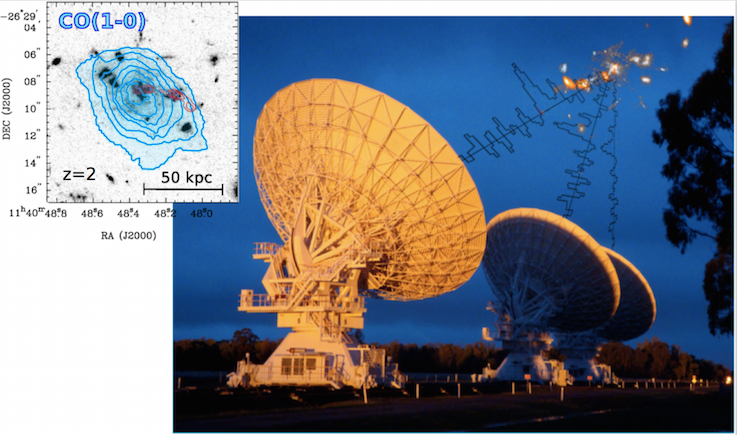| 20th of January 2016 |
|---|

|
| ATNF Colloquium |
| Cold molecular gas in high-z proto-cluster radio galaxies:
ATCA's strength in the ALMA era |
| by Bjorn Emonts (Centro de Astrobiologia, CSIC-INTA, Madrid, Spain) |
| Abstract:
I will present ATCA result from a survey for cold molecular CO(1-0) gas in proto-cluster radio galaxies at z ~ 2. In various systems we detect large amounts of very widespread molecular gas, which reveal interesting physical processes in the evolution of these distant galaxies. In several cases, we find localised CO(1-0) emission far away from the host galaxy, just beyond the tip of the radio jet. This is suggests that jet-induced feedback triggers the formation of molecular gas out to ~100 kpc in the halo environment. I will also show the intriguing case of the Spiderweb Galaxy, where CO(1-0) is spread across a ~70 kpc reservoir in the center of a proto-cluster. The cold molecular gas appears to be located in between the proto-galaxies, where it fuels in-situ star formation across the IGM. Its low velocity dispersion suggests that the gas has been deposited through long-sought cold accretion processes. During the talk, I will compare our ATCA results with recent studies that we did with ALMA and the VLA, and show that the ATCA is an excellent complement to these facilities. In particular its low-surface-brightness sensitivity and ability to target the lowest CO transitions allow us to perform unique science with the ATCA millimetre system. The above figure shows the ATCA, which 7mm system we used to trace carbon monoxide, CO(1-0), in proto-cluster radio galaxies at a redshift of 2. The target in this picture is the Spiderweb Galaxy (z = 2.16), which contains an extended reservoir of cold molecular gas that fuels widespread star formation across the halo environment. |